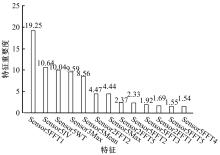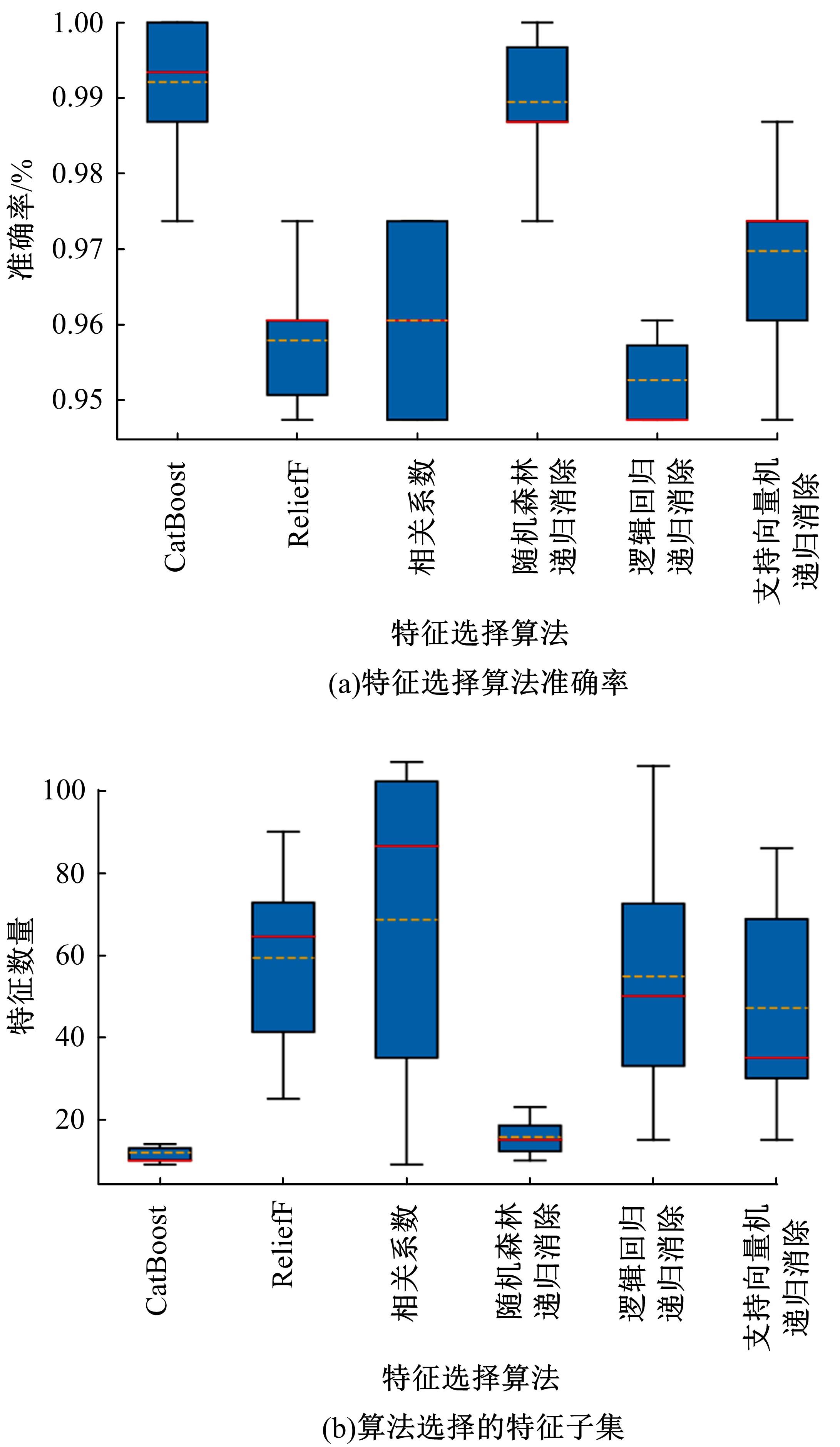Journal of Jilin University(Engineering and Technology Edition) ›› 2022, Vol. 52 ›› Issue (8): 1951-1956.doi: 10.13229/j.cnki.jdxbgxb20210176
A new method for rapid detection of pesticide residues based on multi⁃sensor optimization
Pei-ze LI1,2( ),Shi-shun ZHAO1,Xiao-hui WENG3,Xin-mei JIANG4,Hong-bo CUI4,Jian-lei QIAO4,Zhi-yong CHANG5,6(
),Shi-shun ZHAO1,Xiao-hui WENG3,Xin-mei JIANG4,Hong-bo CUI4,Jian-lei QIAO4,Zhi-yong CHANG5,6( )
)
- 1.College of Mathematics,Jilin University,Changchun 130012,China
2.School of Artificial Intelligence,Jilin University,Changchun 130012,China
3.School of Mechanical and Aerospace Engineering,Jilin University,Changchun 130022,China
4.College of Horticulture,Jilin Agricultural University,Changchun 130118,China
5.Key Laboratory of Bionic Engineering,Ministry of Education,Jilin University,Changchun 130022,China
6.College of Biological and Agricultural Engineering,Jilin University,Changchun 130022,China
CLC Number:
- S481.8
| 1 | Boroduleva A, Wu J, Yang Q, et al. Development of fluorescence polarization immunoassays for parallel detection of pesticides carbaryl and triazophos in wheat grains[J]. Analytical Methods, 2017,9(48): 6814-6822. |
| 2 | Abdallah O I, Malhat F M. Thiacloprid residues in green onion (allium cepa) using micro liquid-liquid extraction and liquid chromatography-tandem mass spectrometry[J]. Agricultural Research, 2020, 9(3): 340-348. |
| 3 | Mercader J V, Agullo C, Abad-Somovilla A, et al. A monoclonal antibody-based immunoassay for mepanipyrim residue sensitive analysis in grape juice and wine[J]. Food Analytical Methods, 2020, 13(3): 770-779. |
| 4 | 常志勇, 陈东辉, 佟月英, 等. 基于人体嗅觉特征的猪肉新鲜度仿生电子鼻检测技术[J].吉林大学学报:工学版, 2012, 42(): 131-134. |
| Chang Zhi-yong, Chen Dong-hui, Tong Yue-ying, et al. Human olfactory feature based bionic electronic nose technology for pork freshness detection[J]. Journal of Jilin University(Engineering and Technology Edition), 2012, 42(Sup.1): 131-134. | |
| 5 | 常志勇, 陈东辉, 张凌, 等.基于多传感器融合的鸡肉新鲜度检测方法[J].吉林大学学报: 工学版, 2013, 43(): 493-496. |
| Chang Zhi-yong, Chen Dong-hui, Zhang Ling, et al. Method of chicken freshness detection based on multi-sensor fusion[J]. Journal of Jilin University(Engineering and Technology Edition), 2013, 43(Sup.1): 493-496. | |
| 6 | Sun H, Tian F, Liang Z, et al. Sensor array optimization of electronic nose for detection of bacteria in wound infection[J]. IEEE Transactions on Industrial Electronics, 2017, 64(9): 7350-7358. |
| 7 | Cipriano D, Capelli L. Evolution of electronic noses from research objects to engineered environmental odour monitoring systems: a review of standardization approaches[J]. Biosensors, 2019, 9(2): 75. |
| 8 | Amkor A, El Barbri N. A measurement prototype based on gas sensors for detection of pesticide residues in edible mint[J]. Journal of Food Measurement and Characterization, 2021, 15(1): 170-180. |
| 9 | 翁小辉, 栾祥宇, 陈冬雪, 等.基于特征提取的烃类气体电子鼻检测方法[J].吉林大学学报: 工学版, 2020, 50(6): 2306-2312. |
| Weng Xiao-hui, Luan Xiang-yu, Chen Dong-xue, et al. Electronic nose detection for hydrocarbon gas based on feature extraction[J]. Journal of Jilin University(Engineering and Technology Edition), 2020, 50(6): 2306-2312. | |
| 10 | Xu K, Wang J, Wei Z, et al. An optimization of the MOS electronic nose sensor array for the detection of Chinese pecan quality[J]. Journal of Food Engineering, 2017, 203: 25-31. |
| 11 | Liu T, Zhang W, McLean P, et al. Electronic nose-based odor classification using genetic algorithms and fuzzy support vector machines[J]. International Journal of Fuzzy Systems, 2018, 20(4): 1309-1320. |
| 12 | Yan K, Zhang D. Feature selection and analysis on correlated gas sensor data with recursive feature elimination[J]. Sensors and Actuators B-Chemical, 2015, 212: 353-363. |
| 13 | Prokhorenkova L, Gusev G, Vorobev A, et al. CatBoost: unbiased boosting with categorical features[J]. Advances in Neural Information Processing Systems, 2018, 31: 6638-6648. |
| 14 | Hamzah H, Bustamam A, Yanuar A, et al. Predicting the molecular structure relationship and the biological activity of DPP-4 inhibitor using deep neural network with CatBoost method as feature selection[C]∥12th International Conference on Advanced Computer Science and Information Systems, Depok, Indonesia, 2020: 101-107. |
| 15 | .食品中农药最大残留限量 [S]. |
| 16 | Razavi M R. Gender differences in the effect of virtual social networks use on students' academic performance[J].Current Psychology,2021,40(2): 744-750. |
| [1] | Feng-feng ZHOU,Hai-yang ZHU. SEE: sense EEG⁃based emotion algorithm via three⁃step feature selection strategy [J]. Journal of Jilin University(Engineering and Technology Edition), 2022, 52(8): 1834-1841. |
| [2] | Bin WANG,Bing-hui HE,Na LIN,Wei WANG,Tian-yang LI. Tea plantation remote sensing extraction based on random forest feature selection [J]. Journal of Jilin University(Engineering and Technology Edition), 2022, 52(7): 1719-1732. |
| [3] | Sheng-sheng WANG,Lin-yan JIANG,Yong-bo YANG. Transfer learning of medical image segmentation based on optimal transport feature selection [J]. Journal of Jilin University(Engineering and Technology Edition), 2022, 52(7): 1626-1638. |
| [4] | Jing-bin LI,Yu-kun YANG,Bao-qin WEN,Za KAN,Wen SUN,Shuo YANG. Method of extraction of navigation path of post-autumn residual film recovery based on stubble detection [J]. Journal of Jilin University(Engineering and Technology Edition), 2021, 51(4): 1528-1539. |
| [5] | Xiao-hui WENG,You-hong SUN,Shu-jun ZHANG,Jun XIE,Zhi-yong CHANG. Oil and gas detection method and experimental new technology based on bionic nasal chamber optimization [J]. Journal of Jilin University(Engineering and Technology Edition), 2020, 50(1): 382-388. |
| [6] | Peng-yu WANG,Shi-jie ZHAO,Tian-fei MA,Xiao-yong XIONG,Xin CHENG. Vehicle multi-sensor target tracking and fusion algorithm based on joint probabilistic data association [J]. Journal of Jilin University(Engineering and Technology Edition), 2019, 49(5): 1420-1427. |
| [7] | Wan-fu GAO,Ping ZHANG,Liang HU. Nonlinear feature selection method based on dynamic change of selected features [J]. Journal of Jilin University(Engineering and Technology Edition), 2019, 49(4): 1293-1300. |
| [8] | LIU Jie, ZHANG Ping, GAO Wan-fu. Feature selection method based on conditional relevance [J]. 吉林大学学报(工学版), 2018, 48(3): 874-881. |
| [9] | YUAN Zhe-ming, ZHANG Hong-yang, CHEN Yuan. HIV-1 protease cleavage site prediction based on feature selection and support vector machine [J]. 吉林大学学报(工学版), 2017, 47(2): 639-646. |
| [10] | DAI Kun, YU Hong-yi, QIU Wen-bo,LI Qing. Unsupervised feature selection algorithm based on support vector machine for network data [J]. 吉林大学学报(工学版), 2015, 45(2): 576-582. |
| [11] | WANG Gang, ZHANG Yu-xuan, LI Ying, CHEN Hui-ling, HU Wei-tong, QIN Lei. Novel method for microarray data dimension reduction [J]. 吉林大学学报(工学版), 2014, 44(5): 1429-1434. |
| [12] | YAO Deng-ju, YANG Jing, ZHAN Xiao-juan. Feature selection algorithm based on random forest [J]. 吉林大学学报(工学版), 2014, 44(01): 137-141. |
| [13] | CHANG Zhi-yong, CHEN Dong-hui, ZHANG Ling, TONG Yue-ying, WENG Xiao-hui, TONG Jin. Method of chicken freshness detection based on multi-sensor fusion [J]. 吉林大学学报(工学版), 2013, 43(增刊1): 493-496. |
| [14] | YANG Xiao-jun, SONG Qing-song, MA Xiang, LI Dong-hai. Fault-tolerance target tracking based on multi-model information filtering [J]. 吉林大学学报(工学版), 2013, 43(05): 1381-1385. |
| [15] | CHANG Zhi-yong, CHEN Dong-hui, TONG Jin, TONG Yue-ying, XIE Jun. Human olfactory feature based bionic electronic nose technology for pork freshness detection [J]. 吉林大学学报(工学版), 2012, 42(增刊1): 131-134. |
|
||







